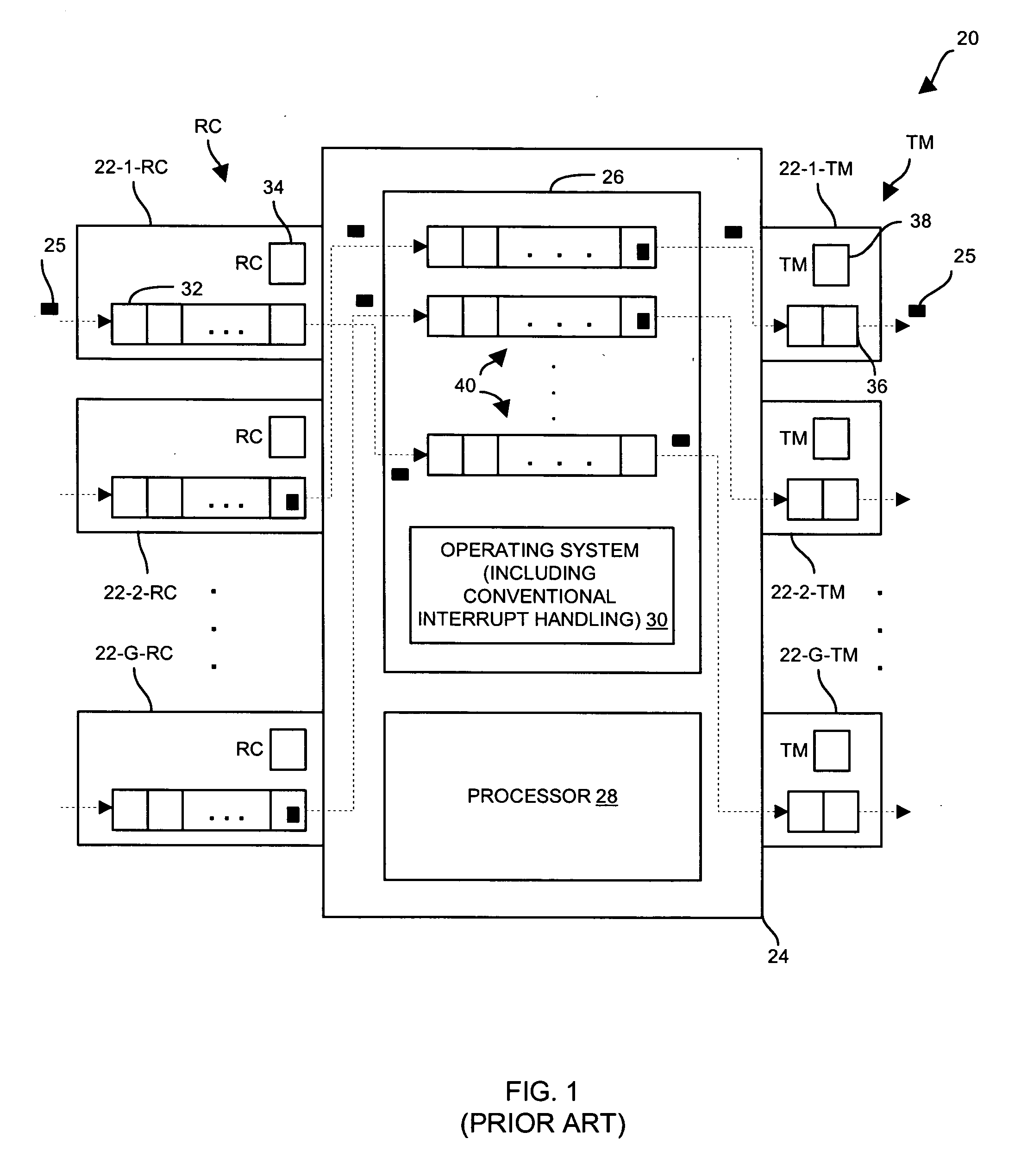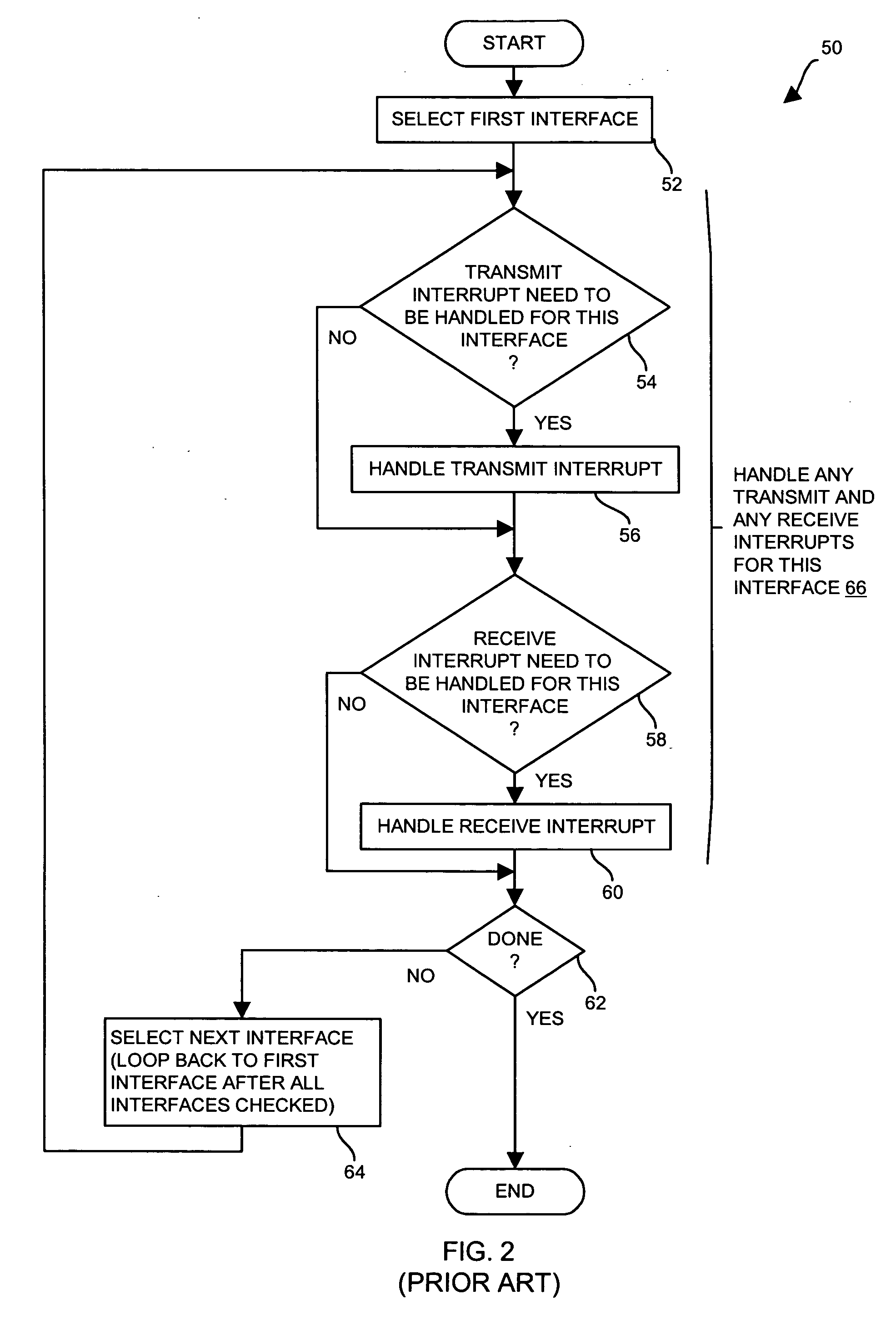Methods and apparatus for moving data elements within a data communications device
a data communication device and data element technology, applied in data switching networks, instruments, frequency-division multiplexes, etc., can solve the problems of requiring more routing time and processing operations, affecting the efficiency of data transmission, so as to and reduce the idle time of transmit circuits
- Summary
- Abstract
- Description
- Claims
- Application Information
AI Technical Summary
Benefits of technology
Problems solved by technology
Method used
Image
Examples
Embodiment Construction
[0051] The invention is directed to techniques for moving data elements (e.g., packets, cells, frames, etc.) within a data communications device, which uses transmit and receive interrupts, to give higher priority to handling the transmit interrupts relative to handling the receive interrupts. This minimizes the idle time of outbound links making the techniques of the invention well suited for increasing processing demands. In one arrangement, the data communications device exclusively runs all of the transmit interrupt handlers to provide data elements to network interfaces for transmission prior to running receive interrupt handlers to process received data elements in a manner that provides global weighted preferential treatment to transmit interrupts.
[0052]FIG. 3 shows a data communications device 100 which is suitable for use by the invention. The data communications device 100 includes multiple network interfaces 102 (e.g., 102-1, . . . , 102-H, where H is a positive integer)...
PUM
 Login to View More
Login to View More Abstract
Description
Claims
Application Information
 Login to View More
Login to View More - R&D
- Intellectual Property
- Life Sciences
- Materials
- Tech Scout
- Unparalleled Data Quality
- Higher Quality Content
- 60% Fewer Hallucinations
Browse by: Latest US Patents, China's latest patents, Technical Efficacy Thesaurus, Application Domain, Technology Topic, Popular Technical Reports.
© 2025 PatSnap. All rights reserved.Legal|Privacy policy|Modern Slavery Act Transparency Statement|Sitemap|About US| Contact US: help@patsnap.com



